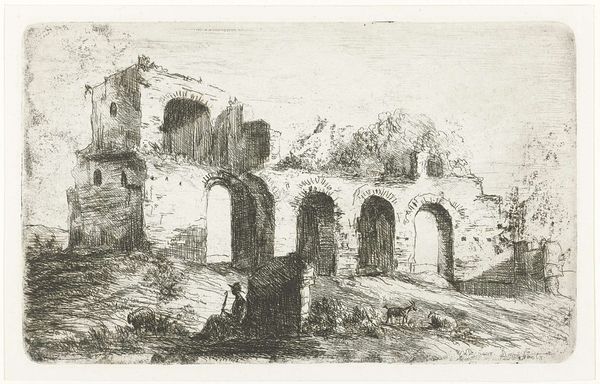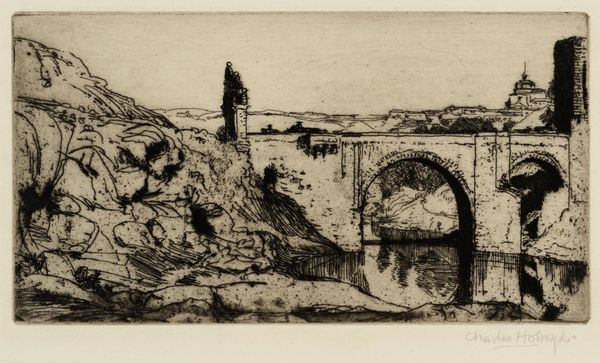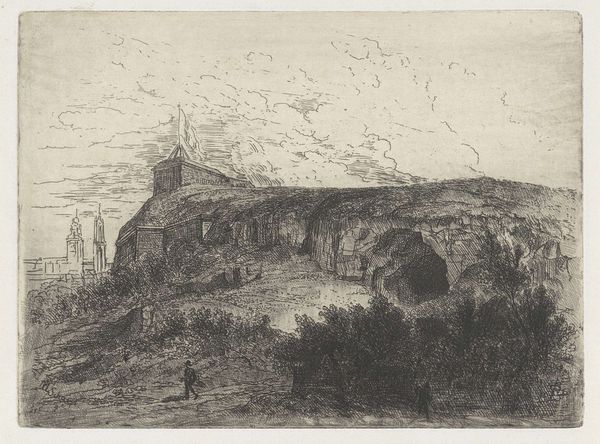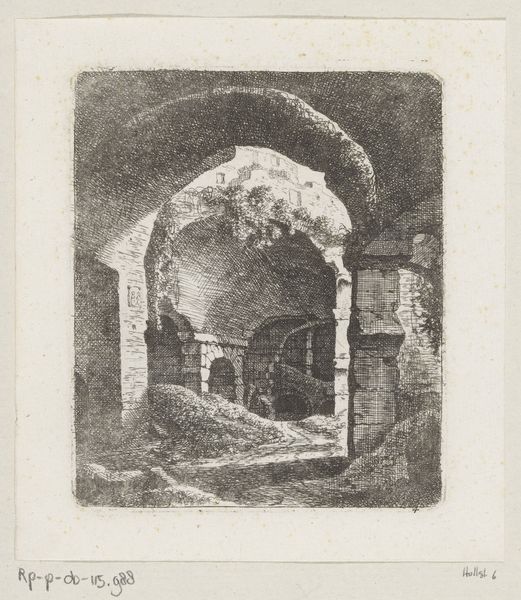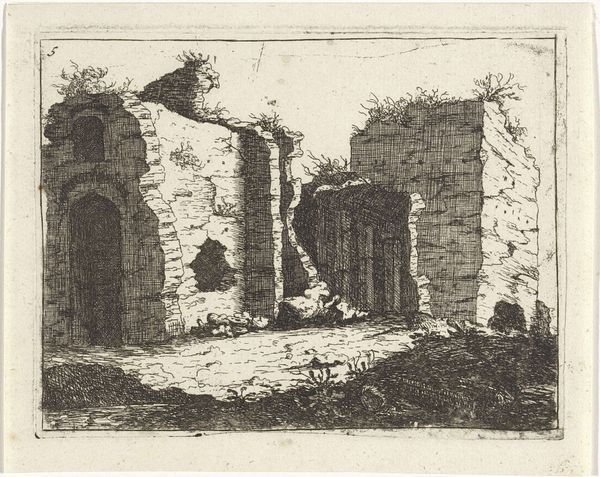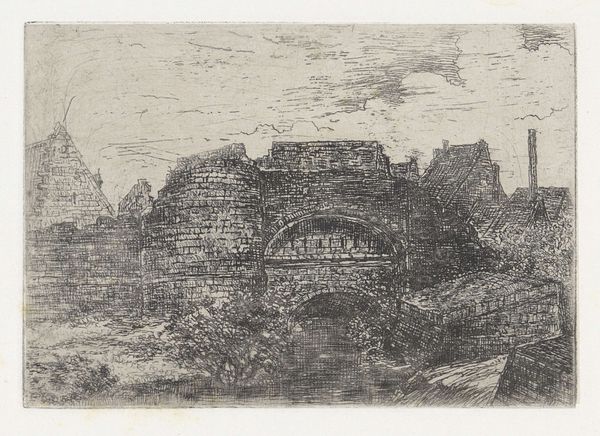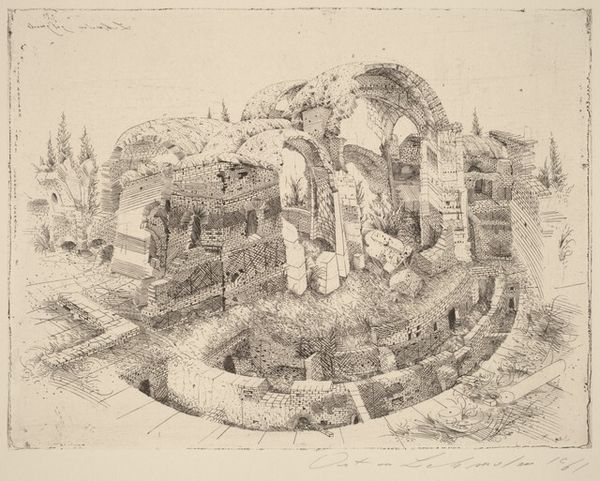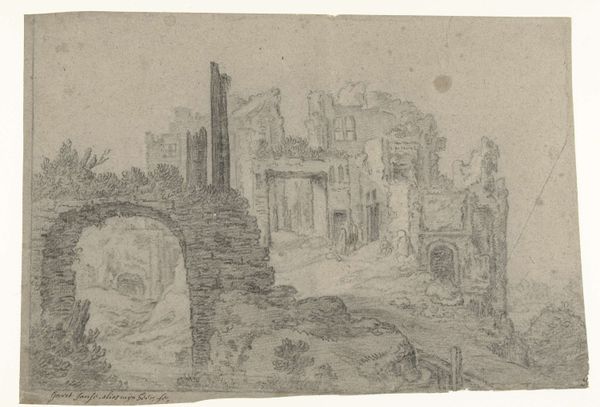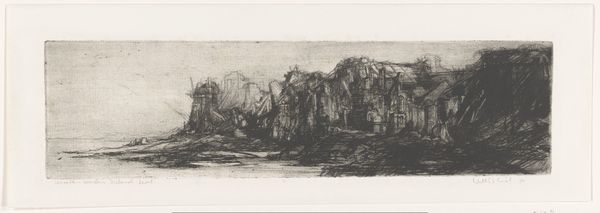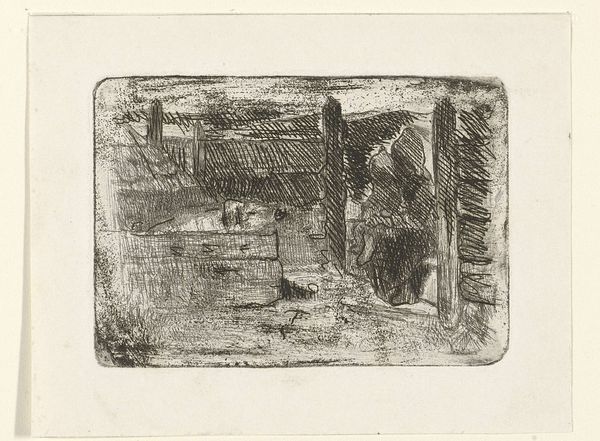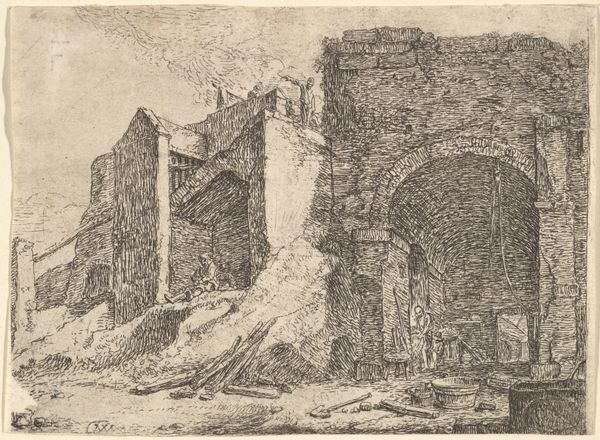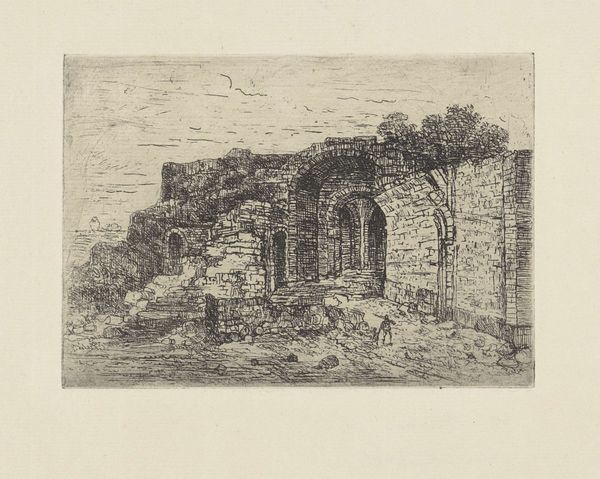
print, etching
# print
#
etching
#
landscape
#
etching
#
cityscape
#
history-painting
#
realism
Dimensions: height 109 mm, width 154 mm
Copyright: Rijks Museum: Open Domain
Curator: Looking at this print, what strikes you first? Editor: The imposing weight of history, quite literally. The Lindekruispoort, what's left of it, dominates the landscape. It’s imposing but also crumbling, melancholic, perhaps? Curator: That’s fitting. This is "Lindenkruispoort te Maastricht," an etching by Alexander Schaepkens, made sometime after 1874. Editor: The crumbling stonework, rendered with such fine detail, is really remarkable. The figure at the base seems to be a nod to a lost world. Is this a common symbol in works of the time? Curator: Absolutely. This print presents a layered reflection on history and national identity, fairly characteristic for its time. In the Netherlands, the 19th century saw intense interest in historical preservation, connected to ideas of nation-building. This gateway held significance in Maastricht’s past; depicting its ruins spoke to the transience of power, even empires, something many Dutch artists and citizens contemplated as the colonial era progressed. Editor: I see a strong contrast. The figure on the path seems very small, almost insignificant. But look at the lone figure atop the arch – does he signify vigilance, or something else entirely? He is gazing outwards, away from the gate. Curator: It’s open to interpretation, of course, but vigilance aligns with the historical function of such gates. We have to remember these structures weren’t just stone, they represented civic authority, trade regulations, the literal threshold of belonging. The fact that Schaepkens renders this already-ruined structure really puts all of that into question. Editor: And it makes you wonder what the gate means now that it has fallen into disrepair, since what remains of the symbolism seems like only a partial message. What are we supposed to be vigilant about now? Curator: That’s precisely it – the image pushes the viewer to actively engage with the historical narrative, to consider not just what was, but what is now, and what might come. These ruins don't exist in isolation. Editor: Looking at this, I now see how an image of physical decay could symbolize political commentary. Thank you. Curator: Indeed, Alexander Schaepkens invites us to contemplate the stories embedded in the very stones around us.
Comments
No comments
Be the first to comment and join the conversation on the ultimate creative platform.
